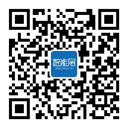Design tools from dSpace are being upgraded to include AUTOSAR, which should help the standard’s growth.
The AUTOSAR standard is expected to make a big change in the software world during the next decade, changing the way software and hardware interact. Developers of autocoding tools are ramping up, planning to make sure that AUTOSAR’s acceptance helps broaden the reach of these software development tools.
AUTOSAR provides a standard interface between hardware and software, making it much simpler to write programs that can run on different types of hardware. That can shorten design time for electronic systems suppliers and make it easier for OEMs to migrate from one supplier to another.
“Our vision is to use AUTOSAR to specify algorithms that let us formally describe the communication between different controllers,” said Lev Vitkin, Staff Software Engineer at Delphi Corp.
The growth for this standard coincides with an expected uptake of autocoding. Automated code generation has been proven as a way to shorten development time for control software, setting the stage for expanded use. It is expected to rise to nearly 60% of the programming for automotive ECUs in five years, up from about a quarter today, according to Arthur D. Little GmbH.
That is already happening. Magneti Marelli Holding S.p.A. is migrating all the code from its engine control unit to AUTOSAR and then implementing the machine-written programs on the same ECU. More than a hundred AUTOSAR software components were revised.
The company used SystemDesk tools from dSpace to establish the new architecture and generate the code. The key goal was to make it simpler to migrate to other controllers as technology advances.
“With the AUTOSAR extensions, programmers can make compliant software so it’s easy to integrate software components onto their ECUs,” said Dirk Fleischer, SystemDesk and TargetLink Product Manager at dSpace Inc.
Fleischer noted that European automakers are a bit more aggressive than U.S. OEMs in their usage of both AUTOSAR and autocoding.
Though there are some risks in early adoption, there are also benefits. If AUTOSAR sees widespread adoption as expected, these early adopters will have experience that will help refine their programs and over time could hold an edge in the market, Fleischer said.
参考译文:
DSPACE公司的设计工具正在升级以包含AUTOSAR标准支持,这会有助于该标准的发展。
AUTOSAR(AUTomotive Open System Architecture,汽车开放系统架构)标准有望给10年后的软件世界带来很大的变化,尤其在软硬件之间的交互方面。自动编码工具的开发商正在加速研发步伐,从而保证AUTOSAR的广泛接受有助于推广它们的开发工具。
AUTOSAR为硬件和软件之间提供了一个标准的接口,从而可更简单地编写可运行在不同类型硬件上的程序。那可缩短电子系统供应商的设计周期,而OEM在更换供应商时也变得更加简单。
“我们的目的就是用AUTOSAR来设置算法,确切的描述不同控制器之间的通讯”,来自Delphi公司的软件工程师Lev Vitkin如是道。
这个标准的发展跟自动编码技术不谋而合。自动代码生成已被证明是缩短控制软件研发周期的一种好办法,而这为其更广泛的用处创造了条件。5年后,这将有望大大地缩短汽车ECU的编程工作,时间缩短可从当前的25%到5年后的60%,Arthur D. Little GmbH公司称。
这个进程已经开始了。Magneti Marelli Holding S.p.A.公司把发动机控制单元的所有代码转换为AUTOSAR标准的代码,然后在相同ECU上用上机写的程序。其中,100个以上的AUTOSAR软件单元做了改动。
该公司采用dSpace公司的SystemDesk工具来建立新的架构,然后生成代码。其关键的目标便是在技术更新后可以更简单地将其移植到其它的控制器上。
“利用AUTOSAR扩展,程序员可以编写具有适应性的软件,所以就可比较容易地将软件单元集成到其ECU上”,来自dSPACE公司的SystemDesk &TargetLink产品经理Dirk Fleischer如是说。
Fleischer指出,在利用AUTOSAR和自动编码技术方面,欧洲汽车制造商比美国汽车制造商走得更快、更大胆些。
Fleischer同时表明,虽然在早期使用时总会有些风险,但是它还有诸多的优点。如果AUTOSAR在未来可如愿以偿地得到广泛应用,这些先期采用的制造商将会在程序改进方面积累宝贵的经验,而这将使其在市场上占有独特的优势。
(转载)





